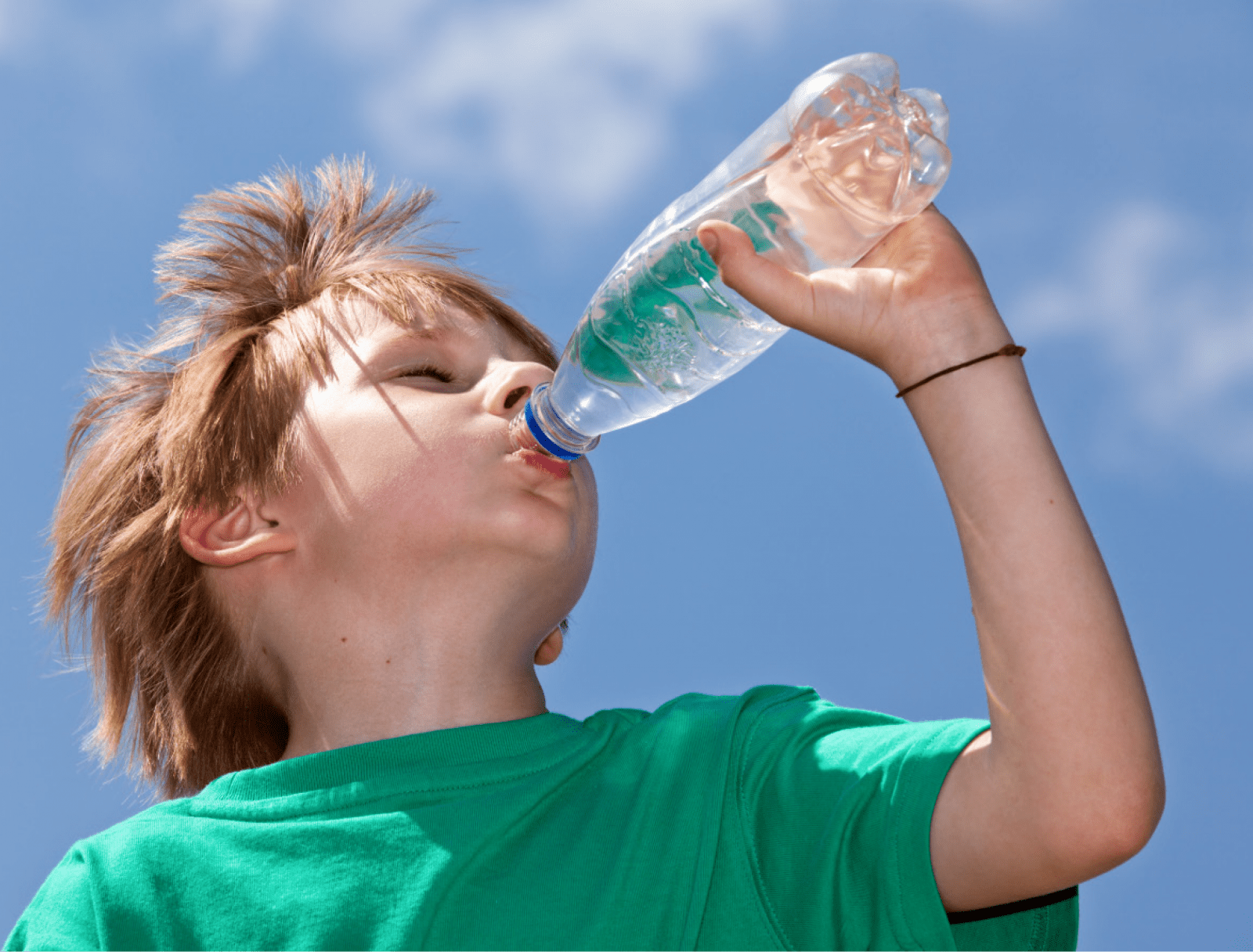Plenty of Water & Getting Used to Heat Protects Athletes from Heat Stroke

by Sam Smith, MD
The relatively mild summer we’ve had this year may have meant more pleasant days and fewer sunburns, but don’t let those cooler temps fool you: Kids are still at risk for heat illness.
As we approach even warmer weather, the medical team at Arkansas Children’s Hospital expects to see more young athletes come to our Emergency Department needing treatment for heat exhaustion and even heat stroke.
We know that two-a-day practices are on the horizon – for football players, cheerleaders and marching band members alike. Unfortunately, these nice breezy summer days mean that young athletes haven’t had a chance to acclimate to the heat, which is an important part of preventing heat illness in this population.
Parents, coaches and their own teammates need to be on the lookout for the signs of heat illness. A few years ago, during a particularly brutal summer, several high school football players ended up in our Pediatric Intensive Care Unit (PICU) because of heat illness. Catching these kids and getting them treatment early can save their lives.
What does heat illness look like? Kids may have some combination of the following symptoms: noticeable, increased thirst; muscle cramps; weakness; decreased performance; nausea; headache; fatigue; light-headedness or dizziness; and difficulty paying attention.
I wanted to know more about how parents can prevent heat illness in their young athletes, so I chatted with Jonathan Elrod, an athletic trainer with Arkansas Children’s Hospital who helps the players at Little Rock Central High School. He said the first step is truly acclimatization.
“We want the kids to carefully begin spending progressively longer times exercising outdoors as they prepare for summer practices,” Elrod said. “This is very important for their health.”
A few basic health principles can also help: getting a good night’s rest, eating a well-balanced diet of fruits and vegetables, drinking plenty of water and sports drinks. Elrod says athletes should avoid anything loaded with sugar or caffeine and says absolutely no energy drinks should be consumed.
We all know that hydration is key to preventing heat illness, but in kids and teens, compliance is essential. That means they should drink whatever healthy liquids they will drink. Water is better for overall hydration, but it’s not helpful if kids won’t drink it. Parents can use flavored sports drinks instead.
Elrod also reminded me that what athletes wear when they practice is also important to consider. Elrod suggests wearing as few layers as possible of light weight, moisture-wicking materials. It’s also helpful to change into dry clothes often.
Cooling bandanas or towels are only useful if they stay exposed to the wind, and if they become wet beneath shoulder pads and helmets, they’re only going to trap heat in and make the situation worse. These items may be a good idea afterward, but Elrod advises against them during practice.
As athletes prepare for summer and fall practices, families need to know what plans are in place to protect their kids from heat illness. Don’t be afraid to ask a coach the following questions:
- What is the plan for preventing heat illness in your athletes?
- Where can athletes go to cool off during breaks?
- How often are players allowed to drink water/sports drinks during practices?
- Does the school or team have an emergency action plan?
- Who monitors athletes during practice to make sure they don’t overheat?
- We hope that most coaches will already have reviewed this information with both their teams and the parents. But if that doesn’t happen, it’s an important conversation for moms and dads to initiate on their own.
If your child comes out of practice – or any other summer activity – showing minor signs they may have heat illness like lightheadedness or cramping, have them rest in a cool place, remove any wet or constricting clothes and start pushing cold fluids like water and sports drinks.
If you see a child collapse, lose consciousness or become confused, it is absolutely an emergency and could be heat stroke. Here’s what to do:
- Cool the child as rapidly as possible. An ice bath is the best way to do this. Other options are putting ice packs over as much of the child’s body as possible or putting the child under a cold shower.
- Dial 9-1-1.
- Remember to cool the child first and transport the child second.
If you want more information on protecting your child from heat illness, check out kendrickfincher.org/, a non-profit started by the family of a child who died in Arkansas after experiencing heat stroke.


 Sam Smith, MD, is surgeon in chief at Arkansas Children’s Hospital and a professor of Surgery at the University of Arkansas for Medical Sciences. He writes a column covering a variety of kids’ medical concerns. If you have a topic you’d like him to consider addressing, email achconnect@archildrens.org.
Sam Smith, MD, is surgeon in chief at Arkansas Children’s Hospital and a professor of Surgery at the University of Arkansas for Medical Sciences. He writes a column covering a variety of kids’ medical concerns. If you have a topic you’d like him to consider addressing, email achconnect@archildrens.org.






